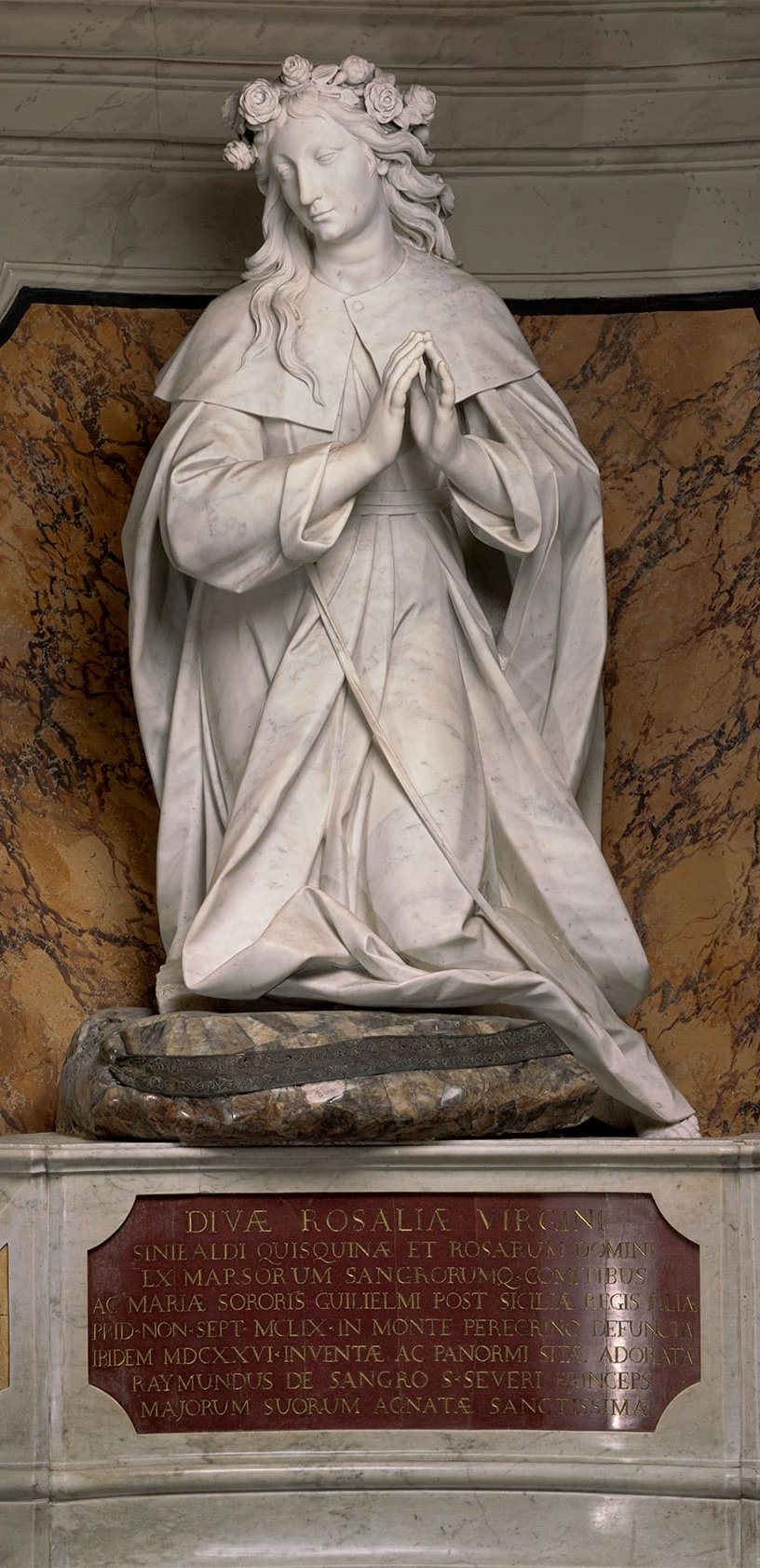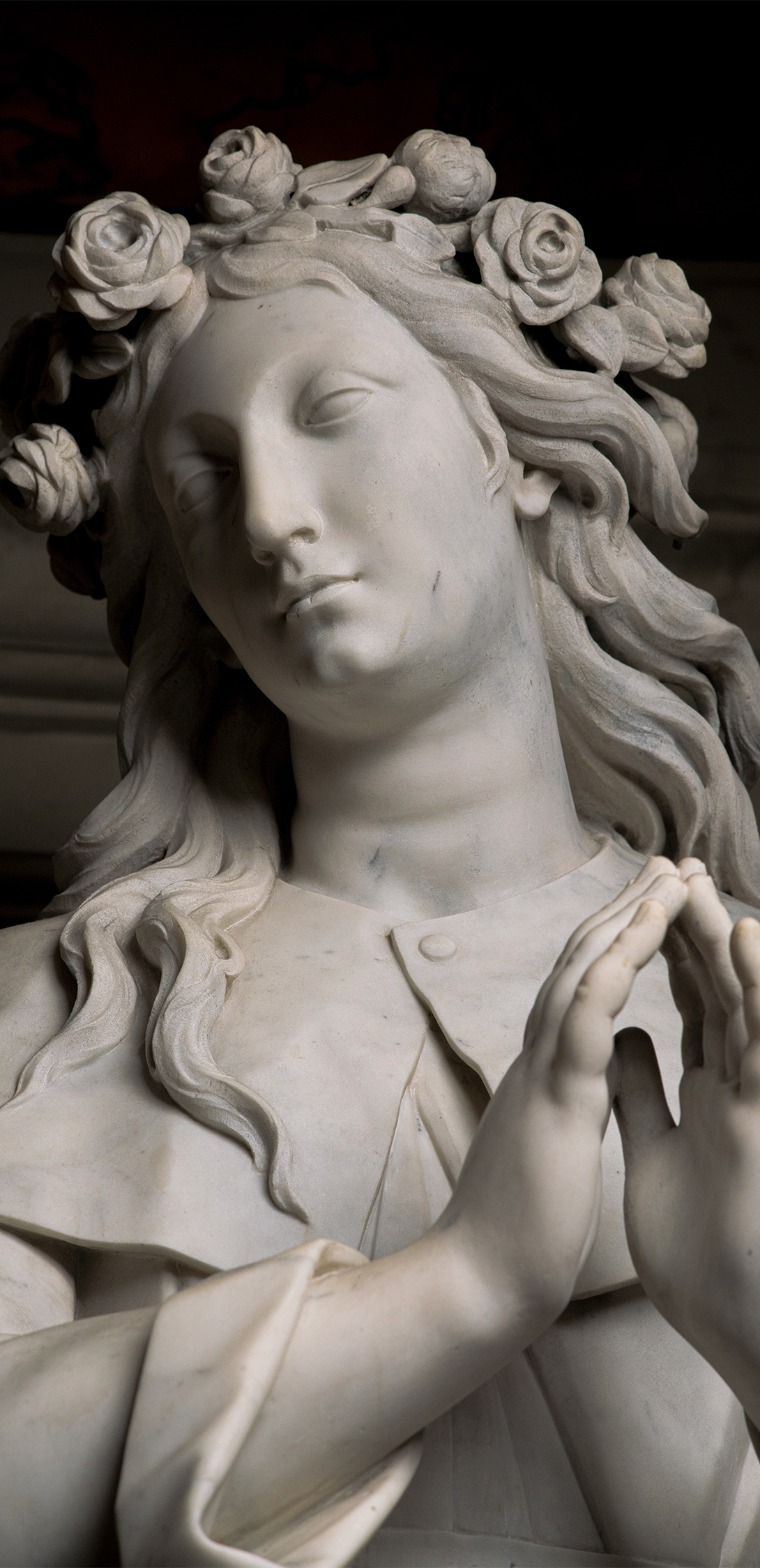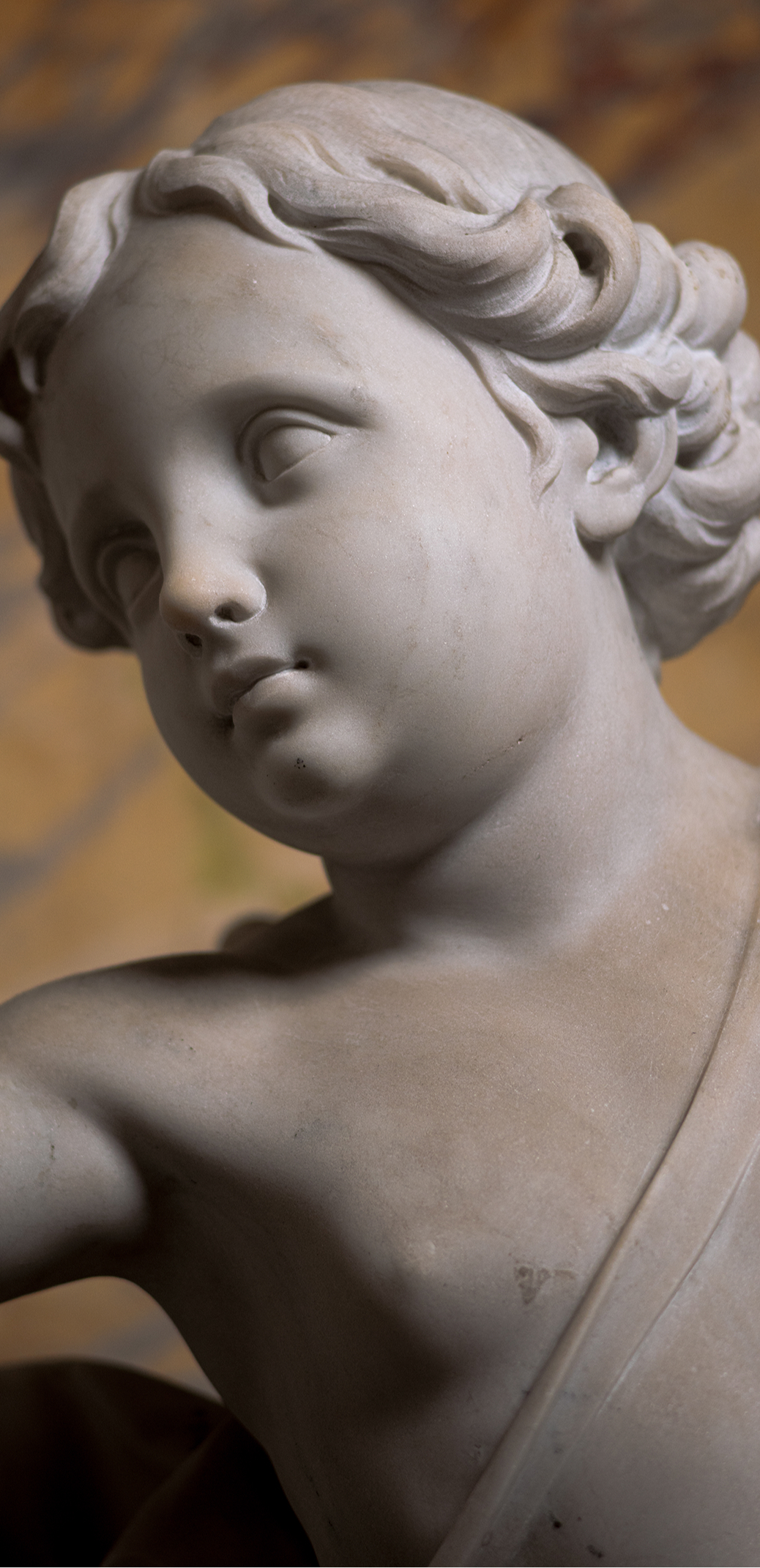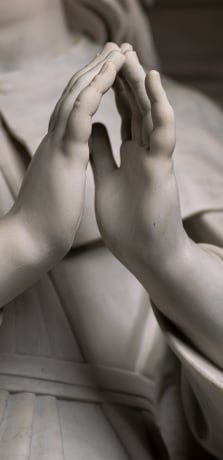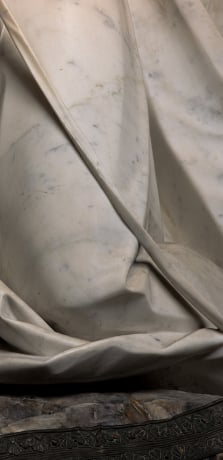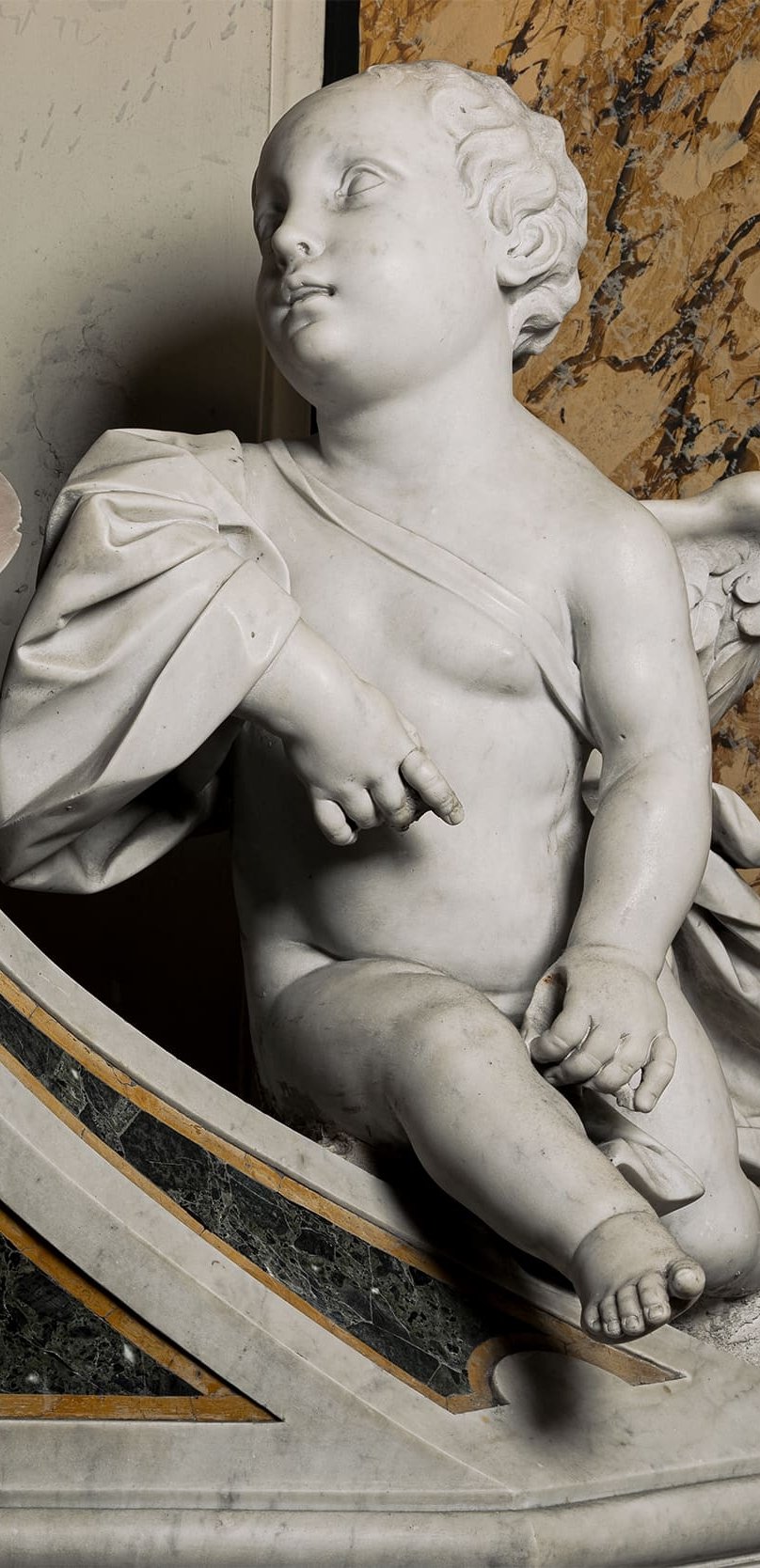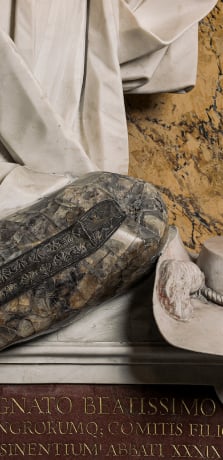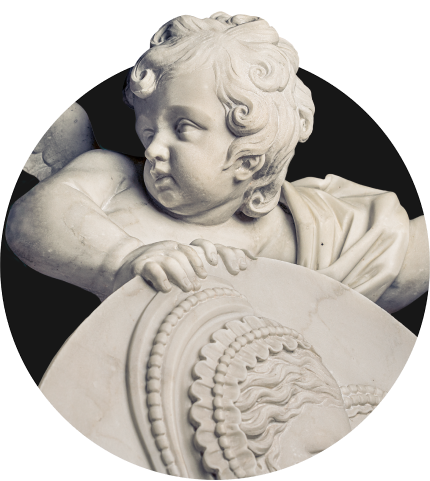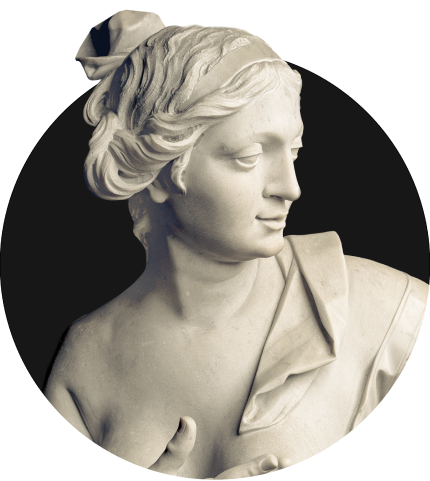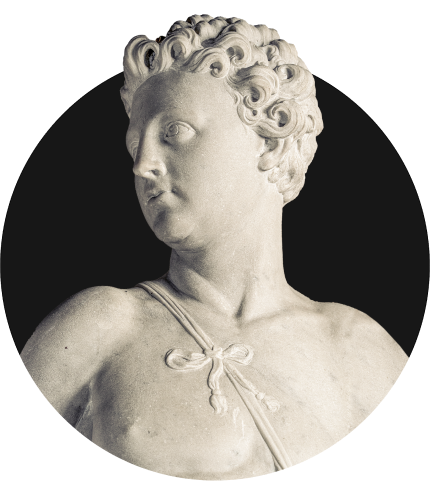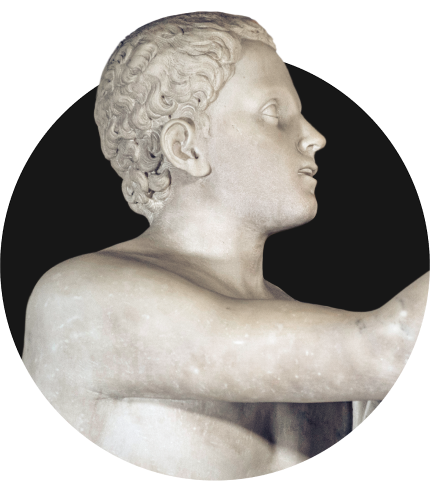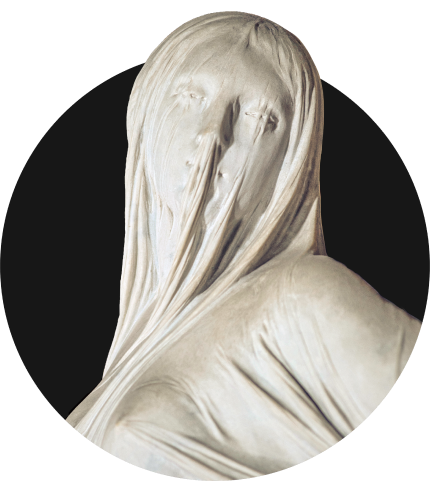
The Statues
Saint Rosalia and Saint Oderisio
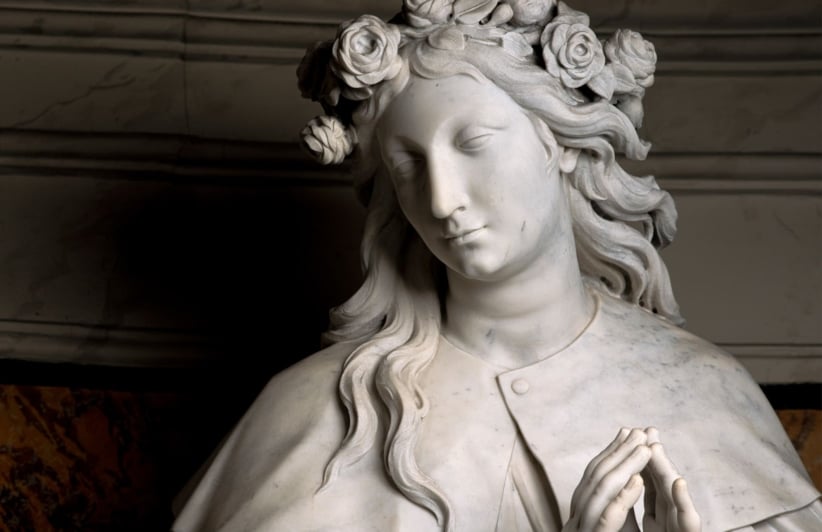

SAINT ROSALIA
Francesco Queirolo, 1756 ca.In the chapel that separates the Sweetness of the Marital Yoke from Modesty is the statue representing Saint Rosalia. Raimondo di Sangro wanted to commemorate the most famous saint in the family. Rosalia was in fact the daughter of Sinibaldo of the counts dei Marsi and di Sangro. The twelfth-century Rosalia became patron saint of Palermo, having saved the city from the plague which descended in 1624. It was in these circumstances that her bones, found on Monte Pellegrino, were transported to Palermo.

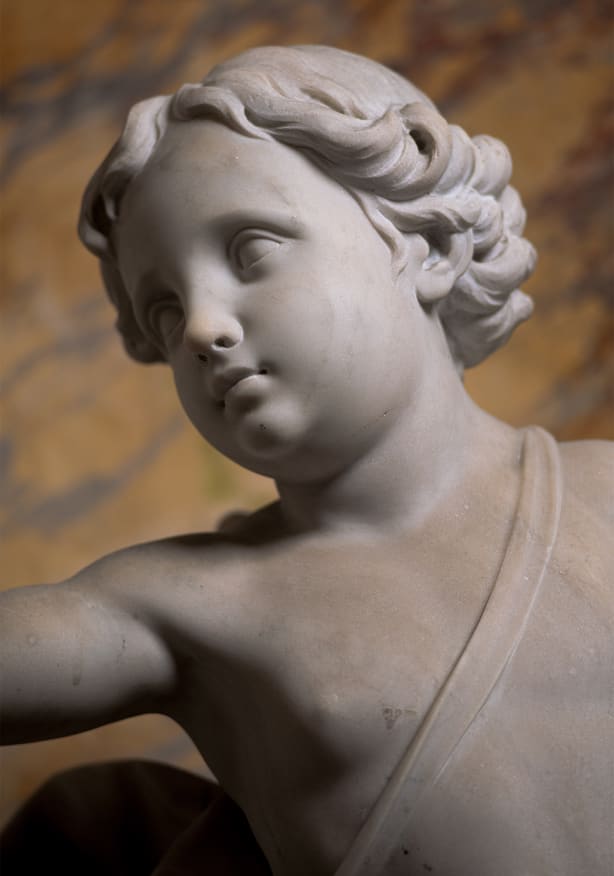

The group of statues
A successful work by Queirolo, the statue exhibits composed and refined taste, a far cry from baroque exaggeration. It is no coincidence that with its chaste tone and formal balance it attracted the attention of a rather special observer, Antonio Canova. Rosalia is in prayer, kneeling on a cushion, her head circled by her characteristic crown of roses. Two angels and an ancient red marble memorial plaque complete the funeral monument.

SAINT ODERISIO
Francesco Queirolo, 1756.Opposite the Chapel of Saint Rosalia is that of another important saint of the family, Oderisio, thirty-ninth abbot of the monastery of Montecassino, where he was buried in 1105. The statue of Saint Oderisio was the work of Queirolo almost certainly in the same year as the plaque, i.e. in 1756, most probably the date of the monument to Saint Rosalia.
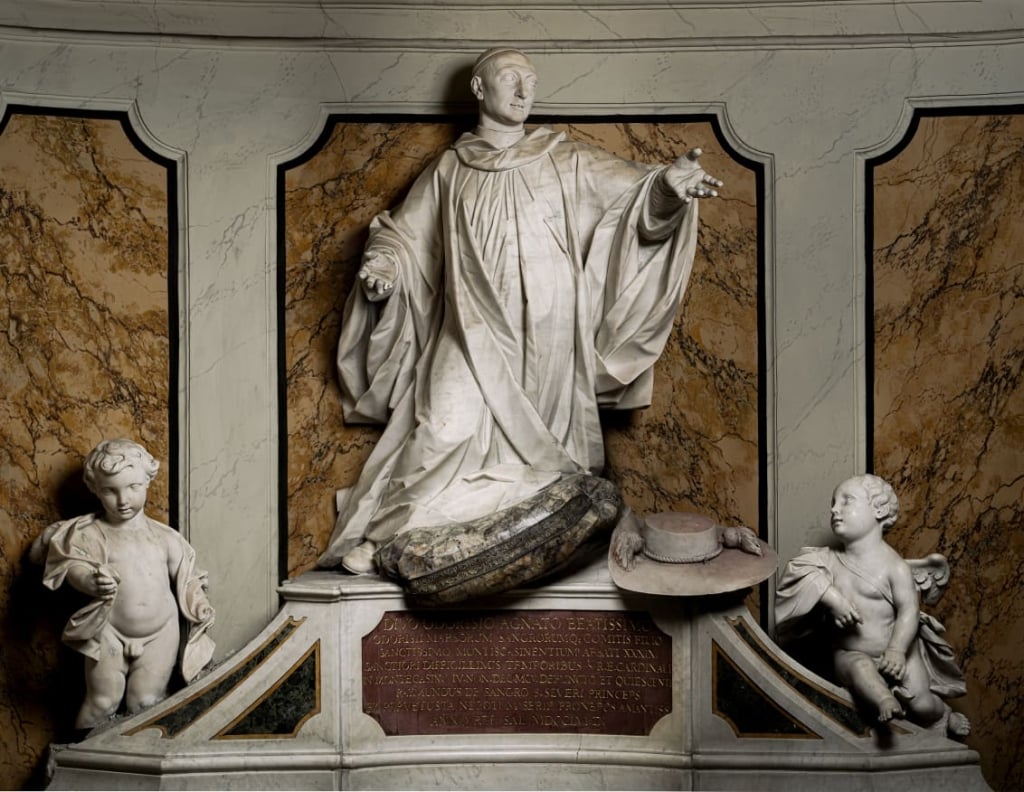
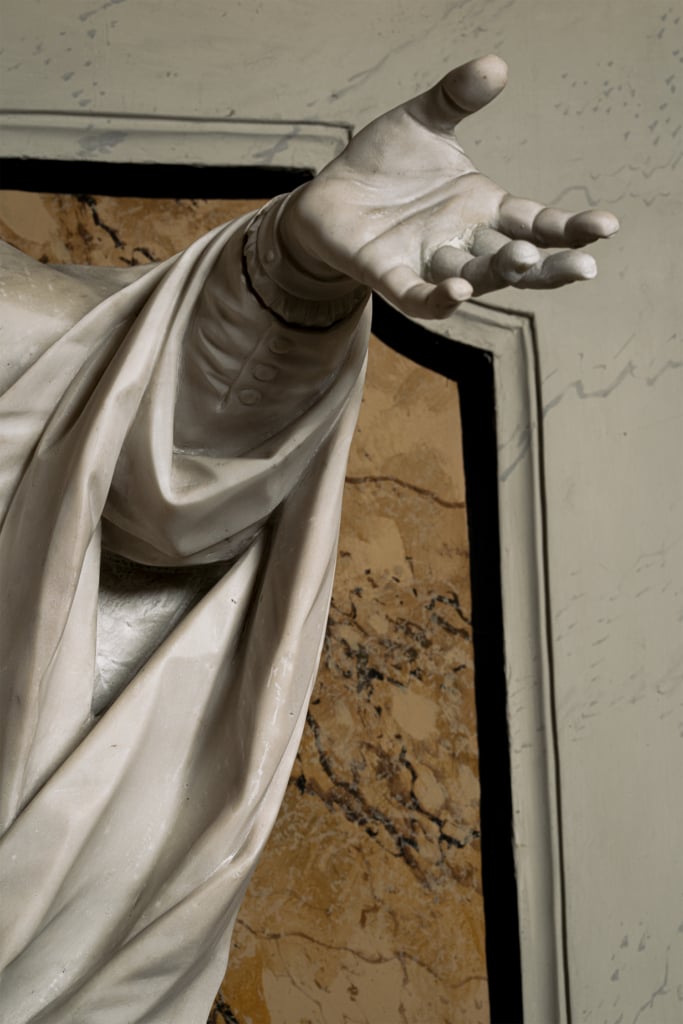
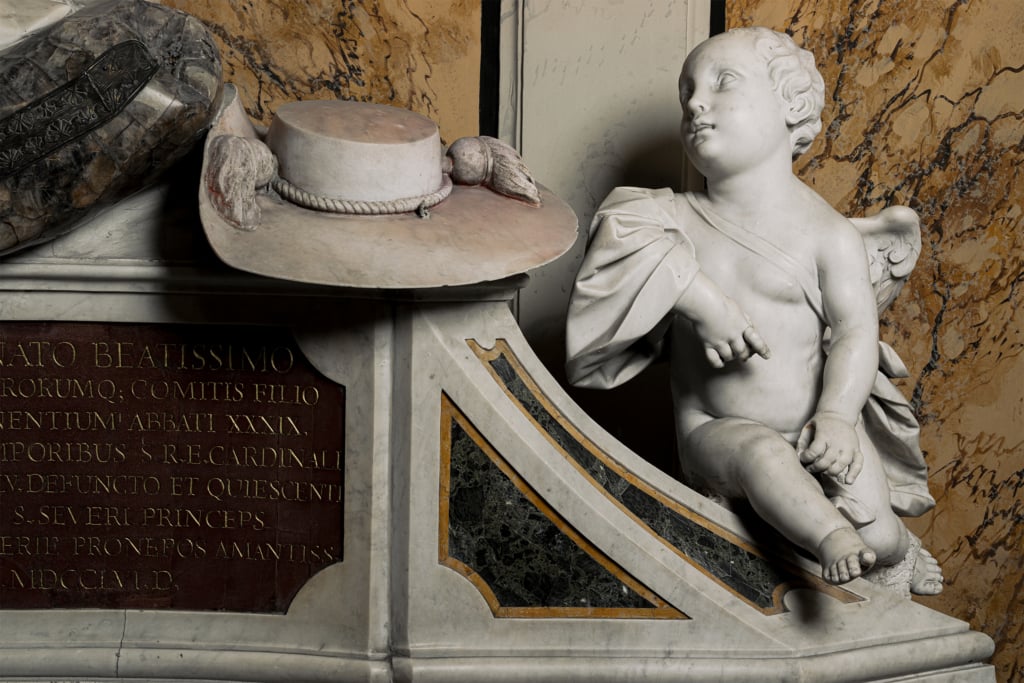
The group of statues
Saint Oderisio is portrayed in a mystic demeanour, kneeling on a cushion next to which lies his cardinal’s hat. The inspiration of the piece emerges above all in the line of the drapery and the vibrant pictorial description. While apparently outside the general allegorical scope of the Chapel, the monuments dedicated to the two main saints of the household confirm, however, the Prince of Sansevero’s intention to celebrate his lineage.
Gallery
Map
- High altar
- The monument to Alessandro di Sangro
- Modesty
- Saint Rosalia
- The sweetness of marital yoke
- Portrait of Vincenzo di Sangro
- Religious zeal
- Monument to Giovan Francesco
di Sangro, first Prince of Sansevero - Liberality
- Monument to Paolo di Sangro,
fourth prince - Decorum
- Monument to Giovan Francesco
di Sangro, third prince - Monument to Cecco di Sangro
- Monument to Giovan Francesco
di Sangro, fifth prince - The veiled Christ
- Glory of Heaven
- Disillusion
- Saint Oderisio
- Sincerity
- The tomb of Raimondo di Sangro
- The labyrinth floor
- Self-control
- Monument to Paolo di Sangro,
sixth prince - Education
- The anatomical machines
- Madonna and child
- Portrait of Raimondo di Sangro
- Monument to Paolo di Sangro,
second prince - Divine Love

